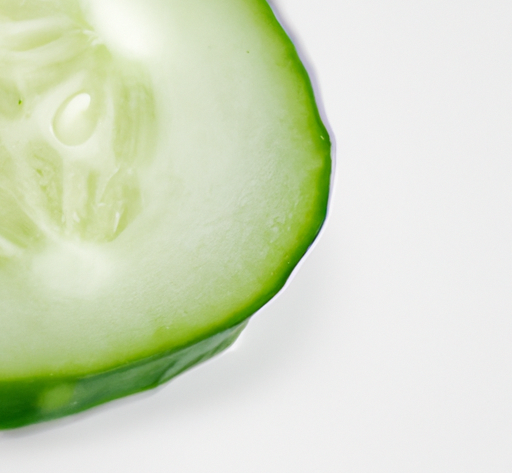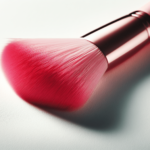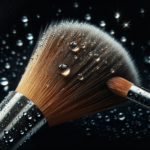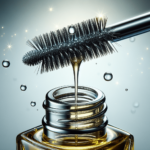Need the essential skin care routine steps? We got you! Having a skincare routine is vital for maintaining healthy and radiant skin. But with so many products and techniques out there, it can be overwhelming to know where to start. From cleansing and exfoliating to moisturizing and protecting, this article will guide you on how to develop a simple yet effective skincare routine that will leave your skin looking its best. So, let’s dive in and uncover the secrets to achieving a glowing complexion!
Determining Your Skin Type
Understanding Different Skin Types
When it comes to skincare, one size does not fit all. Understanding your skin type is essential in order to develop an effective skincare routine that addresses your specific needs. The four main skin types are oily, dry, combination, and sensitive.
Oily skin is characterized by excess sebum production, which can result in a shiny, greasy appearance and a predisposition to acne and clogged pores. Dry skin, on the other hand, lacks sufficient moisture and often feels tight or rough. Combination skin is a combination of both oily and dry, with certain areas being more prone to oiliness, typically the T-zone. Finally, sensitive skin is easily irritated by certain products or environmental factors, and can be prone to redness, itchiness, and dryness.
How to Identify Your Skin Type
Determining your skin type is relatively simple and can be done at home. Start by washing your face with a gentle cleanser and patting it dry with a clean towel. Leave your skin bare for around an hour, allowing it to return to its natural state. After this hour has passed, examine your skin in a well-lit mirror.
If your skin feels oily and appears shiny all over, you likely have oily skin. If your skin feels tight and rough, you most likely have dry skin. Combination skin will be oily in the T-zone, which includes the forehead, nose, and chin, while the cheeks may feel dry. Lastly, if your skin appears red, irritated, or develops rashes easily, you may have sensitive skin.
Identifying your skin type is crucial as it enables you to choose the right products and treatments that will best address your specific skincare needs.
Cleansing
Importance of Cleansing
Cleansing is the foundation of any skincare routine and plays a vital role in promoting healthy, clear skin. It helps to remove dirt, oil, makeup, and impurities that accumulate on the skin’s surface throughout the day. By keeping your skin clean, you can prevent clogged pores, reduce the risk of breakouts, and maintain a fresh, glowing complexion.
Choosing the Right Cleanser
Choosing the right cleanser for your skin type is essential to ensure you effectively cleanse without stripping away essential oils or causing irritation. For oily skin, opt for a gel or foam cleanser that contains ingredients like salicylic acid or tea tree oil to combat excess oil and prevent clogged pores. Dry skin benefits from a creamy or hydrating cleanser that nourishes and moisturizes. Combination and sensitive skin types may benefit from a gentle, fragrance-free cleanser that balances the skin without causing irritation.
Steps for Proper Cleansing
To effectively cleanse your skin, follow these steps:
- Begin by wetting your face with lukewarm water.
- Apply a small amount of cleanser to your fingertips and gently massage it onto your skin in circular motions.
- Pay special attention to areas prone to oiliness or dryness.
- Rinse thoroughly with lukewarm water, ensuring that all cleanser is removed.
- Pat your face dry with a clean towel, avoiding vigorous rubbing as it can cause irritation.
Cleansing your face twice a day, once in the morning and once at night, is generally recommended. However, if you have extremely dry or sensitive skin, it may be best to cleanse just once a day to avoid stripping away too much moisture.
Exfoliating
Benefits of Exfoliation
Exfoliation is a vital step in any skincare routine as it helps to remove dead skin cells, promote cell turnover, and reveal a smoother, brighter complexion. Regular exfoliation can improve the texture of your skin, reduce the appearance of fine lines and wrinkles, and unclog pores, leading to fewer breakouts.
Types of Exfoliants
There are two main types of exfoliants: physical exfoliants and chemical exfoliants. Physical exfoliants involve the use of granules or particles that physically scrub away dead skin cells. Common physical exfoliants include scrubs, brushes, and washcloths. On the other hand, chemical exfoliants use ingredients such as AHAs (alpha hydroxy acids) or BHAs (beta hydroxy acids) to gently dissolve the bonds between dead skin cells, allowing them to be easily sloughed off.
While physical exfoliants can be effective, they can also be harsh on the skin, especially if used too aggressively. Chemical exfoliants, on the other hand, are usually milder and can provide a more even exfoliation. It’s important to choose the type of exfoliant that best suits your skin type and needs.
Frequency of Exfoliation
The frequency of exfoliation depends on your skin type and the type of exfoliant you are using. For oily or combination skin, exfoliating two to three times a week may be suitable. Dry or sensitive skin, on the other hand, may require less frequent exfoliation, perhaps once a week or every other week. It’s important to observe how your skin reacts to exfoliation and adjust the frequency accordingly. Over-exfoliating can cause skin dryness, irritation, and sensitivity, so it’s essential to find the right balance.
Toning
Importance of Toning
Toning is a crucial step in a skincare routine as it helps to restore the skin’s pH balance, remove any remaining impurities, and prepare the skin for further treatments or moisturization. Additionally, toners can help minimize the appearance of pores, provide hydration, and reduce redness and inflammation.
Choosing the Right Toner
When selecting a toner, consider your specific skin concerns and choose a product that addresses them. If you have oily or acne-prone skin, look for toners that contain ingredients like witch hazel or salicylic acid to control oil production and prevent breakouts. Dry or sensitive skin types may benefit from toners that are alcohol-free and contain hydrating ingredients like hyaluronic acid or rosewater.
How to Apply Toner
To apply toner correctly, follow these steps:
- After cleansing your face, pour a small amount of toner onto a cotton pad or into the palm of your hand.
- Gently swipe the cotton pad or pat the toner onto your face, avoiding the eye area.
- Focus on the T-zone and other areas where you may be prone to oiliness or enlarged pores.
- Allow the toner to fully absorb into your skin before applying any other products or moisturizers.
Toning should be done after cleansing and before applying any serums, treatments, or moisturizers to ensure maximum absorption and efficacy of the products.
Moisturizing
Benefits of Moisturizing
Moisturizing is a crucial step in any skincare routine as it helps to hydrate and nourish the skin, lock in moisture, and create a protective barrier. Regardless of your skin type, moisturizing is essential to maintain a healthy, balanced complexion. It helps to prevent dryness, flakiness, and the development of fine lines and wrinkles. Additionally, moisturizers can improve the skin’s texture, reduce redness and inflammation, and provide a smoother, more even skin tone.
Selecting the Right Moisturizer
Choosing the right moisturizer is vital to ensure it caters to your specific skin type and concerns. For oily skin, look for lightweight, oil-free moisturizers or gels that won’t clog pores or contribute to excess oiliness. Dry skin types will benefit from richer, creamier moisturizers that provide intense hydration and nourishment. Combination skin can opt for a moisturizer that balances oiliness without causing dryness in other areas. Lastly, sensitive skin types should choose moisturizers that are fragrance-free and formulated with gentle, soothing ingredients like aloe vera or chamomile.
Application Techniques
To properly apply moisturizer, follow these steps:
- After cleansing and toning, take a pea-sized amount of moisturizer onto your fingertips.
- Gently massage the moisturizer into your skin using circular motions, starting from the center of your face and working your way outwards.
- Pay attention to any areas that may require extra hydration, such as the cheeks or forehead.
- Allow the moisturizer to fully absorb into your skin before applying sunscreen or makeup.
Moisturizing should be done twice a day, in the morning and at night, to ensure the skin remains hydrated and protected throughout the day and night.
Serums and Treatments
Understanding Serums and Treatments
Serums and treatments are concentrated formulas that target specific skincare concerns and provide additional benefits that may not be achieved with just a cleanser and moisturizer. They are designed to penetrate deeper into the skin and deliver active ingredients that can address issues such as acne, hyperpigmentation, fine lines, or dullness.
Choosing the Right Serums and Treatments
When selecting serums and treatments, it’s important to consider your skin concerns and choose products that are formulated to address them. For example, if you have acne-prone skin, look for serums or treatments that contain ingredients like salicylic acid or benzoyl peroxide to fight acne-causing bacteria and unclog pores. If you are concerned about hyperpigmentation or dark spots, opt for serums with ingredients like vitamin C or kojic acid, which can help brighten and even out the skin tone.
Incorporating Them into Your Routine
Serums and treatments should be applied after cleansing, toning, and moisturizing. Generally, a small amount of serum or treatment is sufficient, as they are highly concentrated. Apply the product onto clean fingertips and gently massage it into the skin, focusing on the areas of concern. Allow the product to fully absorb before applying any other products, such as sunscreen or makeup. Use serums and treatments as needed, whether it’s daily, every other day, or a few times a week, according to the directions provided by the product.
Sun Protection
Why Sun Protection is Crucial
Sun protection is not only essential for preventing sunburn but also plays a vital role in maintaining healthy, youthful-looking skin. Prolonged sun exposure without protection can lead to premature aging, wrinkles, sunspots, and even skin cancer. Protecting your skin from the damaging effects of the sun is crucial for maintaining a healthy complexion.
Selecting the Right Sunscreen
When it comes to choosing sunscreen, consider the following factors:
- SPF: Look for a broad-spectrum sunscreen with an SPF (sun protection factor) of at least 30. Higher SPF values provide greater protection, especially if you spend an extended amount of time outdoors.
- Ingredients: Opt for sunscreens that contain ingredients like zinc oxide or titanium dioxide, as they provide effective protection against both UVA and UVB rays.
- Formulation: Choose a sunscreen that suits your preferences and needs, whether it’s a lotion, cream, gel, or spray. It’s also important to consider the texture and finish of the sunscreen, ensuring it feels comfortable on your skin.
Applying Sunscreen Correctly
To ensure you are properly protected from the sun, follow these guidelines:
- Apply sunscreen generously to all exposed areas of skin, including the face, neck, ears, and hands.
- If using a lotion or cream, smooth it onto the skin, ensuring even coverage.
- Reapply sunscreen every two hours, or more frequently if sweating or swimming.
- Don’t forget to apply sunscreen even on cloudy or cooler days, as UV rays can still penetrate through clouds and cause skin damage.
Make sun protection a daily habit, regardless of the weather or season, to safeguard your skin from harmful UV rays.
Eye Care
Importance of Eye Care
The skin around the eyes is delicate and tends to be thinner than the rest of the face, making it more susceptible to signs of aging, such as fine lines, wrinkles, and puffiness. Additionally, dark circles and under-eye bags can make you look tired or older than you actually are. Incorporating eye care into your skincare routine can help address these concerns and maintain a youthful, refreshed appearance.
Choosing the Right Eye Cream
Eye creams are specifically formulated to target the delicate skin around the eyes and address common concerns such as wrinkles, puffiness, and dark circles. When choosing an eye cream, look for ingredients like hyaluronic acid, retinol, or peptides, which can help plump the skin, reduce the appearance of wrinkles, and boost collagen production. Additionally, eye creams that contain caffeine or vitamin K can help minimize puffiness and dark circles.
Proper Application of Eye Cream
To apply eye cream correctly, follow these steps:
- Start with a clean face and ensure your hands are clean as well.
- Take a small pea-sized amount of eye cream onto your ring finger, as it exerts the least amount of pressure on the delicate skin.
- Gently pat the eye cream onto the skin around your eyes, starting from the inner corner and moving outward.
- Avoid tugging or pulling at the skin, as this can contribute to the development of wrinkles.
- Allow the eye cream to fully absorb into the skin before applying any other products or makeup.
It’s important to be gentle when applying eye cream and to avoid getting the product into your eyes.
Lip Care
Why Lip Care is Important
Lip care is often overlooked, but the skin on our lips is delicate and prone to dryness and chapping. Neglecting lip care can result in discomfort, flaky lips, and even painful cracks. By incorporating lip care into your skincare routine, you can keep your lips soft, smooth, and hydrated.
Choosing the Right Lip Balm
When selecting a lip balm, look for products that contain moisturizing ingredients like shea butter, coconut oil, or beeswax. Avoid lip balms with harsh ingredients, fragrances, or additives that can further dry out or irritate the lips. It’s also important to consider your specific lip concerns, such as sun protection or anti-aging benefits, and choose a lip balm that caters to those needs.
Tips for Healthy Lips
In addition to using a lip balm regularly, here are some tips for maintaining healthy lips:
- Exfoliation: Exfoliate your lips once or twice a week using a gentle lip scrub or a homemade mixture of sugar and honey. This helps remove dead skin cells and promotes smoother lips.
- Hydration: Stay hydrated by drinking plenty of water throughout the day. Proper hydration is key in maintaining well-hydrated lips.
- Protection: Apply a lip balm with SPF before heading outdoors to protect your lips from harmful UV rays. Lips can also burn and suffer from sun damage.
- Avoid licking: Licking your lips may provide temporary relief, but it actually worsens dryness by evaporating moisture and causing further dehydration. Avoid the temptation to lick your lips and reach for lip balm instead.
By following these tips, you can keep your lips soft, supple, and healthy.
Diet and Lifestyle Factors
Impact of Diet on Skin
It’s often said that healthy skin starts from within, and this couldn’t be more true. Your diet plays a significant role in the health and appearance of your skin. A well-balanced diet that includes a variety of fruits, vegetables, whole grains, lean proteins, and healthy fats can provide the essential nutrients needed to maintain healthy skin.
Incorporate foods rich in antioxidants, such as berries, green leafy vegetables, and nuts, to help protect the skin from free radicals and reduce inflammation. Omega-3 fatty acids, found in fatty fish, flaxseeds, and walnuts, can help promote healthy cell membranes and reduce inflammation. Additionally, staying hydrated by drinking plenty of water throughout the day is crucial for maintaining skin hydration and preventing dryness.
Importance of Hydration
Hydration is not only important for overall health but also for the appearance of your skin. Drinking an adequate amount of water helps flush out toxins, improve circulation, and maintain skin plumpness and elasticity. Aim to drink at least eight glasses of water a day, and more if you are physically active or live in a dry climate.
In addition to water, consuming hydrating foods such as watermelon, cucumber, and citrus fruits can also contribute to your overall hydration levels.
Other Lifestyle Factors for Healthy Skin
Maintaining healthy skin goes beyond just skincare products and diet. Other lifestyle factors can significantly impact the health and appearance of your skin. Here are some additional tips for maintaining healthy skin:
- Get enough sleep: Aim for seven to eight hours of quality sleep each night. During sleep, your body repairs and regenerates the skin, resulting in a refreshed complexion.
- Manage stress: Chronic stress can contribute to skin issues such as acne breakouts and increased sensitivity. Incorporate stress-management techniques, such as meditation, exercise, or engaging in hobbies, to minimize the impact of stress on your skin.
- Avoid smoking and excessive alcohol consumption: Smoking and excessive alcohol consumption can lead to premature aging, dullness, and wrinkles. Quitting smoking and moderating your alcohol intake can have a positive impact on your skin’s health and appearance.
- Exercise regularly: Regular physical activity improves blood circulation, which helps deliver oxygen and nutrients to the skin. Additionally, exercise helps improve mood and reduce stress, further benefiting your skin.
By incorporating these lifestyle factors into your routine, you can support the health and vitality of your skin from within.
In conclusion, a comprehensive skincare routine involves understanding your skin type, cleansing, exfoliating, toning, moisturizing, using serums and treatments, applying sun protection, caring for your eyes and lips, and considering diet and lifestyle factors. By following these guidelines and customizing your routine to fit your specific needs, you can achieve and maintain healthy, radiant skin. Remember, skincare is not a one-time effort but rather a consistent commitment to taking care of your skin.




